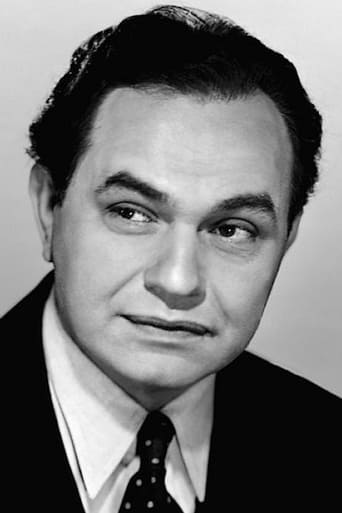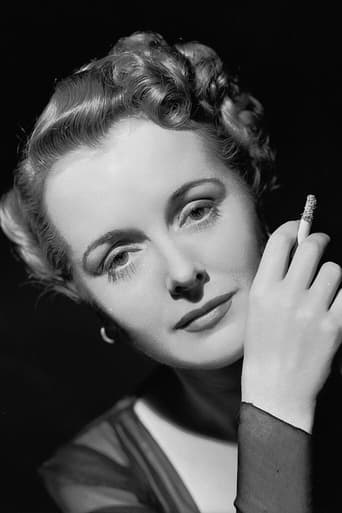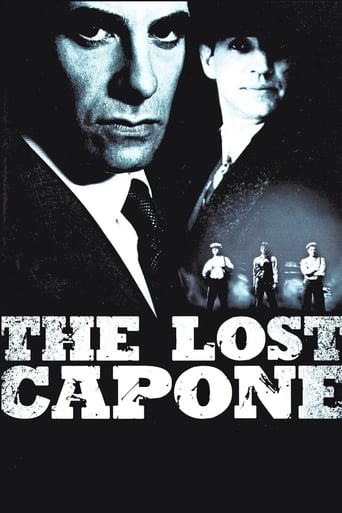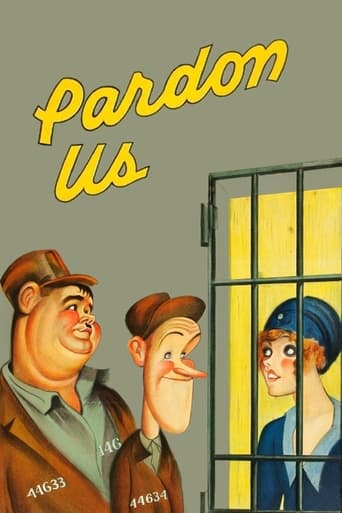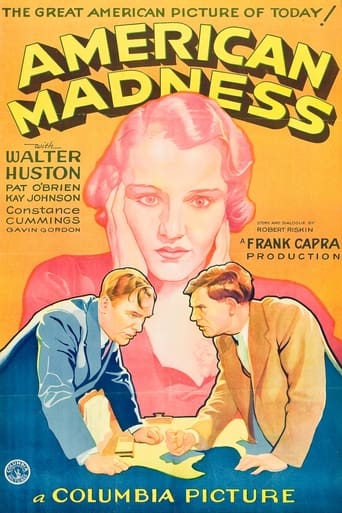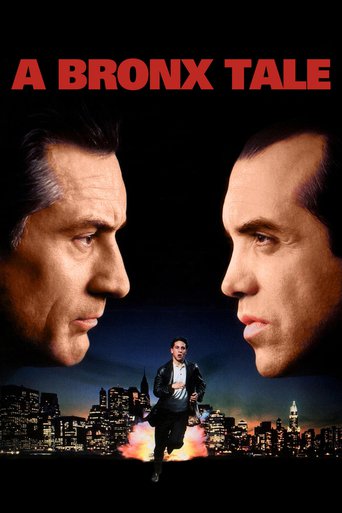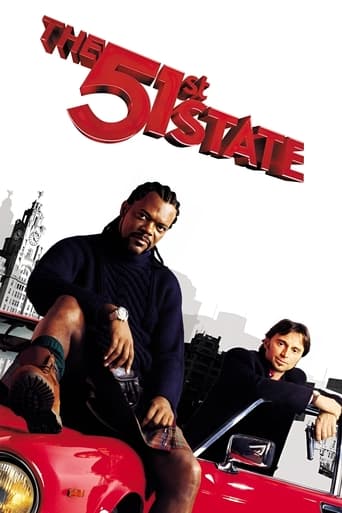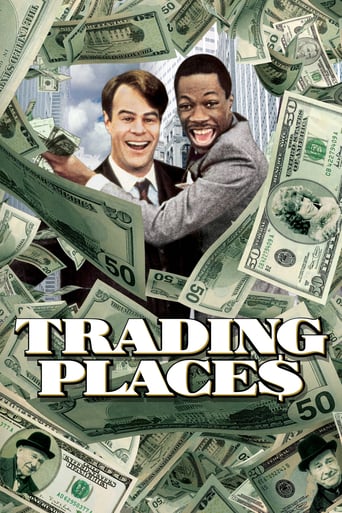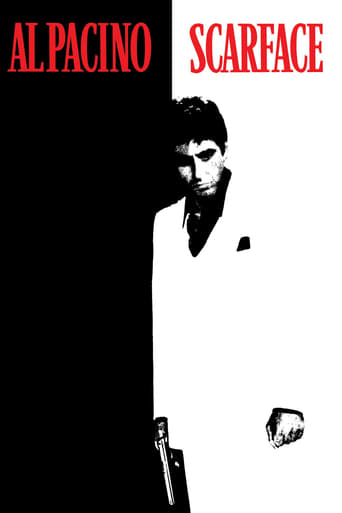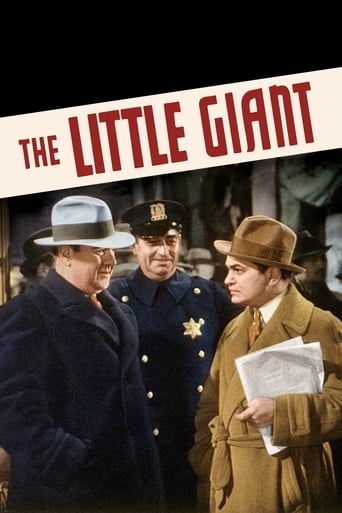
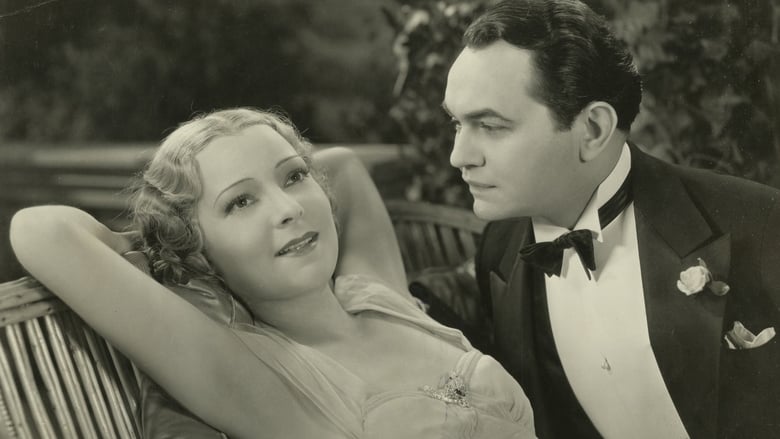
The Little Giant (1933)
Prohibition is ending so bootlegger Bugs Ahearn decides to crack California society. He leases a house from down-on-her-luck Ruth and hires her as social secretary. He rescues Polly Cass from a horsefall and goes home to meet her dad who sells him some phony stock certificates. When he learns about this he sends to Chicago for mob help.
Watch Trailer
Cast


Similar titles
Reviews
Edward G. Robinson who would occasionally channel his gangster image into comedy roles does it for the first time here in The Little Giant. He plays a gangster from Chicago named James Ahern aka Bugs Ahern who has seen the end of Prohibition and has wisely salted away his money. Wanting a little class and wanting to mix with the upper crust he moves to Santa Barbara and starts mixing.Unfortunately he mixes with a family of society crooks father Berton Churchill, mother Louise Mackintosh, son Donald Dillaway. Worst of all he falls for Helen Vinson playing one of her patented bad girl roles who is a notorious flirt. Robinson has rented a mansion from down on her luck society girl Mary Astor who along with thousands of others had her savings wiped out by investing in the junk bonds that Churchill's firm sold. And now he's sold the firm to Robinson.No one makes a sucker out of Robinson and he settles the matter with some friends imported from back east who do it Chicago style. The real Bugs Moran would never have been this gentle as Robinson's old beer salesmen were in The Little Giant.Robinson got deserved kudos for essaying comedy and he would do it many times in his career. You have to see how he and his friends play polo Chicago style.A must for fans of Edward G. Robinson.
Most lovers of classic Hollywood film know what an outstanding and versatile dramatic actor Romanian-born Edward G. Robinson could be. In a career that stretched over four decades, Robinson appeared in an astonishing number of quality films, and even the lesser of his pictures were made interesting and watchable by his mere presence. Fewer viewers, I have a suspicion, may recall how adept Robinson could be at comedy, but for proof of this, one need look no further than one of the actor's pre-Code efforts, "The Little Giant." Released in May 1933, this was not only Eddie's first comedic role, but indeed, the very first gangster comedy ever made. Produced by First National Pictures, which had been taken over by Warner Bros. in 1928, the film's mash-up of genres was successful enough to pave the way for later gangster comedies featuring Robinson. John Ford's "The Whole Town's Talking" (1935, and featuring Jean Arthur in her breakthrough role) was perhaps the best of the bunch, followed in 1938 by the borderline screwball "A Slight Case of Murder" and 1942's very funny "Larceny, Inc.," and even some "serious" gangster pictures featuring Robinson, such as 1938's "The Amazing Dr. Clitterhouse" and 1940's "Brother Orchid," would contain a goodly leavening of humor. In short, the gangster comedy, as initially proved by "The Little Giant," was a very viable entertainment.In the film, Eddie plays a Chicago mobster named Francis "Bugs" Ahearn. When Prohibition ends in 1933 (the film was most certainly timely!) and booze is suddenly made legal, Bugs decides to call it quits, pay off his boys, go legit, get some culture and move to Santa Barbara, CA. He's got "a million and a quarter salted away," and with that filthy lucre and his childhood buddy Al (Russell Hopton, very funny here in his straight-man role), he arrives at a posh hotel by the sea, ready to crash high society. After falling in love with a glamorous "skirt" named Polly Cass (Helen Vinson), Bugs decides to buy a ritzy 20-room, 14-bath mansion to impress her, and makes his pretty Realtor, Ruth (a very appealing Mary Astor), both his house manager and social secretary. But what Bugs doesn't know is that Polly is a con artist, from an entire family of con artists; indeed, a family that makes Janet Gaynor's family of crooks in 1938's "Young in Heart" seem perfectly angelic! It seems as if Bugs might be learning polo and buying a wedding ring in vain....Featuring wonderfully snappy dialogue, well-drawn characters and big laffs, "The Little Giant" is an absolute delight from start to finish. The film is remarkably compact, and manages to pack quite a bit of yucks and story into its brief 74-minute running time. Indeed, director Roy del Ruth never lets the pace flag; he would not work with Robinson again, but would reunite with Astor the following year for a picture called "Upperworld," one that I have not seen but which has a good reputation. Robinson and Astor have some definite chemistry on screen, and the viewer wonders what Bugs sees in the comparatively homely Polly when Astor's Ruth is so much brighter, sweeter, prettier...and certainly more honest. Astor's face in the early '30s seemed a bit softer and rounder than the more angular look she boasted in the '40s, and her Ruth Wayburn here is ever so much more attractive than the Brigid O'Shaughnessy that Humphrey Bogart would encounter in 1941's "The Maltese Falcon." Robinson and Astor had apparently appeared together once before, in the little-seen 1923 silent "The Bright Shawl" (also starring Richard Barthelmess, Dorothy Gish and William Powell--what a cast!--and with Astor playing Robinson's daughter), and would also appear together in 1934's "The Man With Two Faces." Being one of the last of the pre-Code films, "The Little Giant" sports some lines that modern-day audiences might not be prepared for, such as the reference to giving someone "the finger," and when Bugs refers to the upper-crust snobs as a bunch of "fags"! And then there is the startling early scene in which Bugs shows Al a piece of abstract art (Robinson, it should be remembered, would, years later, own one of the largest private art collections in the world, and one that he had to sell in 1956 to pay off a divorce settlement) and asks his buddy, "You ever seen anything like that before?" Al's response: "Not since I've been off cocaine"! You've gotta love these pre-Code gems! Anyway, Robinson seems to be having a ball here, turning his 1931 "Little Caesar" role of Rico Bandello on its head and squeezing it for laffs; he even gets to look straight into the camera once, hilariously. And yet, this tough guy with a decent heart manages to arouse the viewer's sympathy, too, as he haplessly mingles with the snooty society folk and chases a girl who is waaaaay wrong for him. How satisfying it is, then, when Bugs uses some Chicago strongarm tactics toward the film's finale to rectify the wrongs done him by the Cass family! And what a sweet little ending, too, to wrap things up with! An enormously pleasing entertainment, it's no wonder that "The Little Giant" opened up a whole new genre of film!
Like every great First National picture, this one starts off quickly, with Edward G. Robinson in full, glorious gangster mode, speaking the classic language of the Prohibition movie gangsters, words like "mugs" and "rods" ornamenting his lines. But there is a twist here: Robinson (as "Bugs" Ahearn, the "Beer Baron"), is going to quit the illegal beer business (since Prohibition has ended), and go straight. In fact, Bugs has a dream: to become successful in high society.The script is very fast paced and delightful, and in a couple of places, quite shocking, reminding us of how progressive pre-Code Hollywood could be; I almost fell out of my chair when Robinson's flunky and companion Al, when asked by Robinson whether he ever saw a painting like the one in his living room, responds with, "not since I stopped using cocaine"!! Another shocker comes later when Robinson refers to some slimy society people as "fags". Oh dear! Robinson was an amazing actor. He constantly shifts back and forth between the know-it-all wiseguy bully, and a would be high society snob, who is very unsure of himself. This uncertain, unconfident Robinson, a tough guy who swallows his pride and grovels before his betters, is pleasing to see, and he does it very well. Perhaps one of the great Robinson scenes of all time is when Mary Astor seduces an unsuspecting EGR on a couch. Robinson plays it beautifully, as he has no idea that he is being seduced; and in a delightful moment, when Mary Astor has shyly moved away, sudden realization hits EGR as to what might have just happened. He turns to the camera, and I swear he makes exactly the kind of faces, registering surprise and possible comprehension to the audience, exactly as Oliver Hardy famously did a thousand times in his career. A priceless and lovely moment.There are many satisfying moments in this film, and I highly recommend this. The early EG Robinson movies are gifts to be treasured, and this is one of the best.
Little Giant, The (1933) *** (out of 4) When F.D.R. gets elected President, Chicago bootlegger Bugs Ahearn (Edward G. Robinson) decides to get out of the business. He heads off to California where he plans on crashing into society and he thinks he's doing a good job but he doesn't realize that his love (Helen Vinson) is actually from a corrupt family that is just using him. THE LITTLE GIANT isn't a perfect movie and it's not really that funny either but it's impossible not to fall for its charm and especially the charm of Robinson. Most people will always remember Robinson for his tough guy roles but if you dig deeper into his filmmography you will see that he was actually able to play just about any type of character. This film is without question a spoof of his tough image but it works so well because you can believe Robinson in the part of the gangster but also believe him in the sillier stuff where he's trying to be a gentleman. There are some very good moments scattered throughout the film but I think the real highlight is in the final ten-minutes once Robinson realizes what has happened and he decides to bring a little Chicago out West. Vinson is also very good in her supporting role as she has no problem playing this brat and we get nice work from Russell Hopton and Kenneth Thomson. Mary Astor is also extremely charming as the woman who falls for Robinson, although he doesn't know it at first. Both actors are so good together that the film actually drags a bit when they're not together. Fans of Robinson or the Warner gangster pictures are certainly going to want to check this out just to see the studio and star spoofing themselves.


